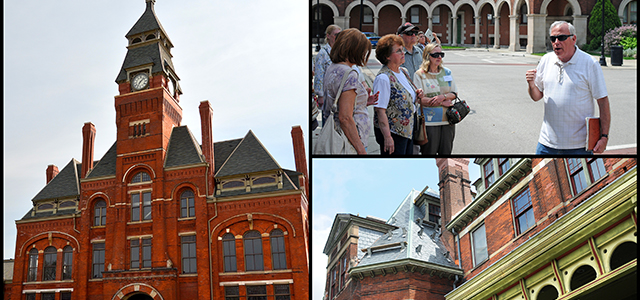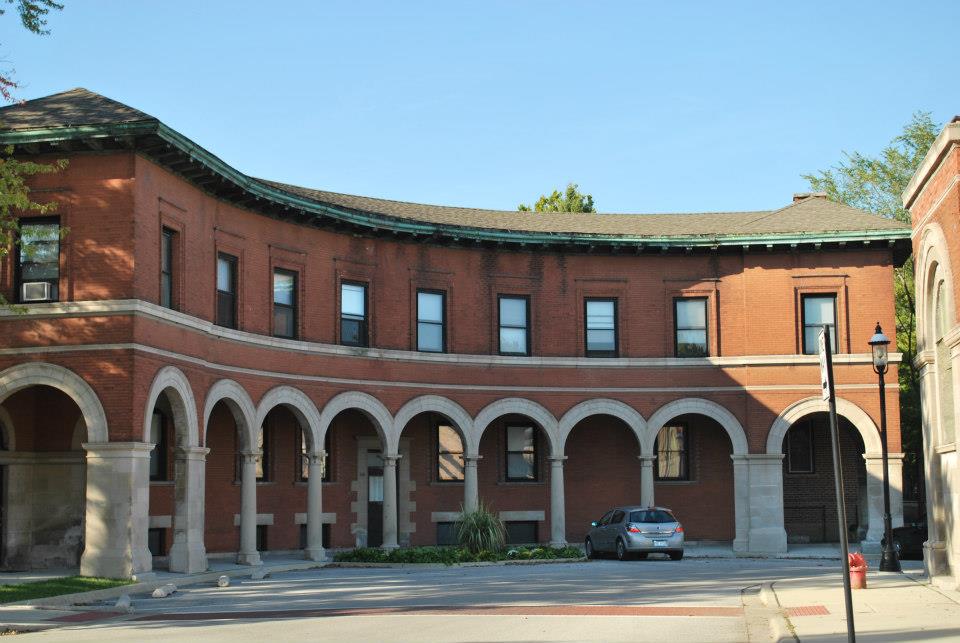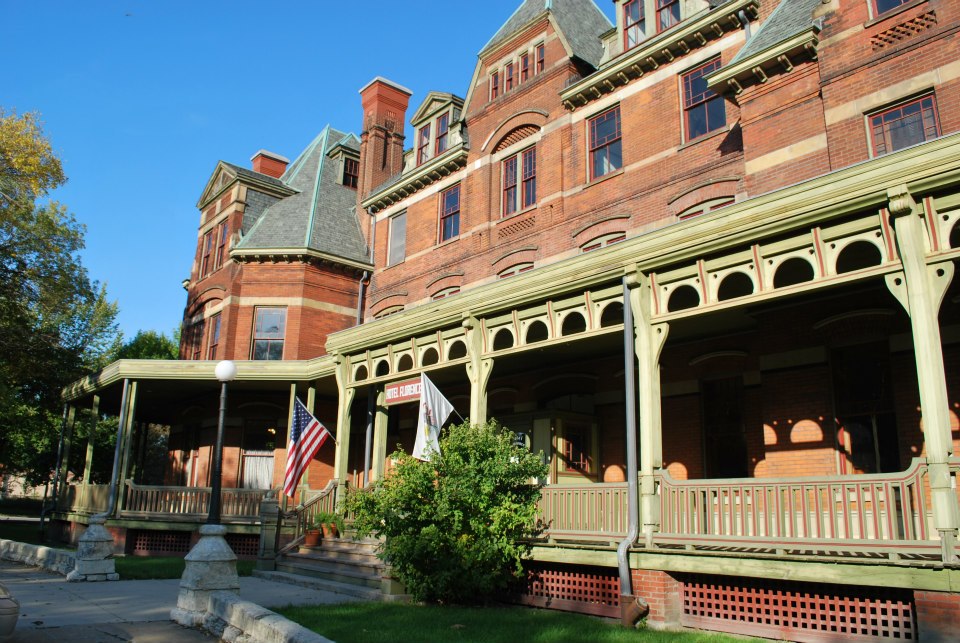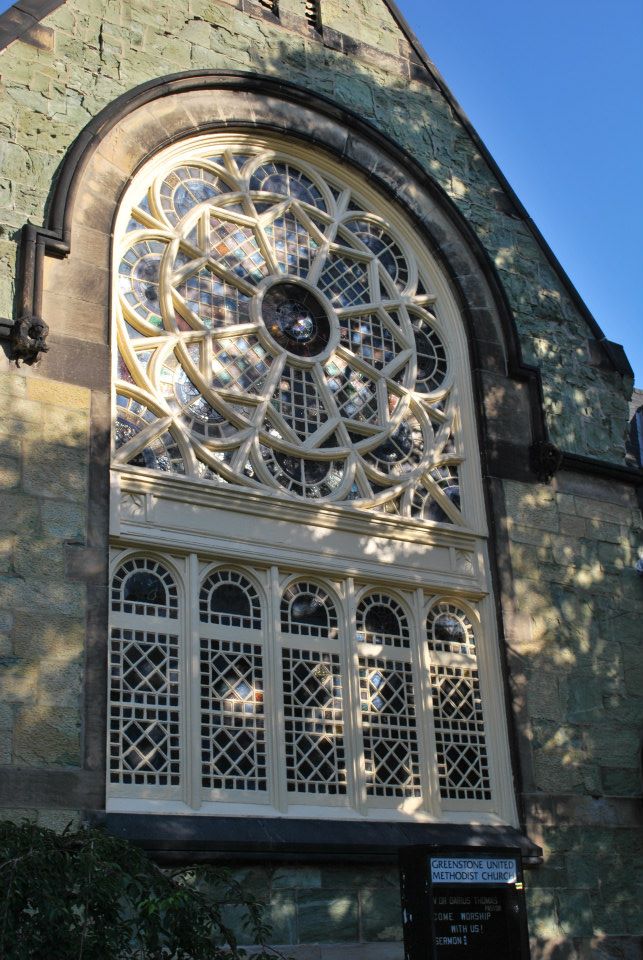Explore American History at the Pullman National Monument
By Kim Kislowski published May 01, 2019

Construction on the industrial town of Pullman began in 1880, the vision of George M. Pullman. It would be the first community of its kind. Built around the Pullman Palace Car Company, it encompassed 4,000 acres south of Chicago as an insulated community with housing and other amenities available to company workers. Designed by architect Solon Spencer Berman and landscape architect Nathan Barret, buildings would be all-brick construction from row houses to executive mansions.
The first non-industrial building that was part of Pullman was the Hotel Florence. The community included an arcade building and church and buildings were designed in Queen Anne-style with Romanesque arches.
Since 1973, the mission of the Historic Pullman Foundation has been to preserve and restore the original structures of the Town of Pullman and promote public awareness of the significance of the site as one of the nation’s first planned industrial communities. The area received State of Illinois landmark status in 1969, National Historic Landmark District designation in 1971, was designated as one of the first City of Chicago landmark districts in 1972 and became a National Monument and part of the U.S. National Park Service in 2015. The National Monument is comprised of not just one building, but a district.
The area includes 90 percent of the original buildings - the Greenstone Church, Hotel Florence, factory clocktower, private residences. Admission is free to the Pullman National Monument Visitor Information Center (with donations accepted) and it is where you can watch a 15-minute introductory video on the town’s history and preservation efforts, view exhibits and artifacts and pick up a copy of a self-guided walking tour brochure. The building stands at the site where the Arcade Building once stood. It was demolished in 1927. The predecessor to the modern shopping mall, it housed a 500-seat theatre, a post office, a library, the Pullman Trust and Savings Bank, town management offices and storefront businesses.
The Hotel Florence is currently closed to the public as it undergoes renovations as part of the Pullman State Historic Site. It opened in 1881 with 50 sleeping rooms, a dining room, a billiard room, barber shop, men’s and women’s parlors and the only bar in Pullman.
 The Greenstone Church originally constructed at a cost of $57,000 is unchanged and includes an 1882 Steere and Turner organ. It is open for Sunday services. For more information, visit https://greenstoneunitedmethodistchurchchicago.wordpress.com/history/.
The Greenstone Church originally constructed at a cost of $57,000 is unchanged and includes an 1882 Steere and Turner organ. It is open for Sunday services. For more information, visit https://greenstoneunitedmethodistchurchchicago.wordpress.com/history/.
After standing for 117 years, the Clock Tower and Administration Building were seriously damaged by fire in 1998 and preservation efforts continue.
Currently the only black labor history museum in the nation, the A. Philip Randolph Pullman Porter Museum explores the role of African-American workers in the company’s success and the U.S. Labor Movement. The museum is open Thursday through Saturday (but closed for several months during the winter). For more information, visit aprpullmanportermuseum.org.
Guided walking tours are available to the public on the first Sunday of the month from May to October at 1:30 p.m. The tours are $10 for adults and $7 for seniors and students and last about 90 minutes.
Special events take place each year, organized by the Historic Pullman Foundation, including an annual Garden Walk, annual Historic Pullman House Tour and Candlelight House Walk. Visit pullmanil.org for more details. Please note that visitor center closed for several weeks during the winter months.
Two events are planned to commemorate the 125th anniversary of the 1894 Pullman strike, led by Eugene V. Debs. On May 11 from 11 a.m. - 12:30 p.m. you can attend a free event at the Visitor Information Center led by the Eugene V. Debs Foundation Director Allison Durek, followed by a tour of Pullman led by the Illinois Labor History Society. The event is co-sponsored by the Eugene V. Debs Foundation, Pullman National Monument, National Park Service, Illinois Labor History Society and Historic Pullman Foundation.
The second event, also on May 11, from 1 - 3 p.m. is a 90-minute guided walking tour allowing visitors to walk in the footsteps of the workers whose brave actions altered the future of labor policy in America. The 2.5-mile tour route includes portions of the site that may contain debris, so be sure to wear appropriate footwear. A minimum $20 donation to the Pullman National Monument Preservation Society is required. Tickets are available at https://bit.ly/2PE8UCY.
To learn more about the Pullman National Monument, visit nps.gov/pull.
Photo credits: Carrie Steinweg
Related Articles
As winter moves on, we’ve still got plenty of chilly, gray days to come in the Chicago Southla... READ MORE
The 2024 Chicago Southland Visitors Guide has been released so it’s time to dust off the calen... READ MORE
Olympia Fields, Ill. – (January 22, 2024) – With next Tuesday being “National Plan... READ MORE
If you’ve ever thought that things seem quieter and more peaceful in a winter wonderland, that... READ MORE










THINGS TO DO
EVENTS
DINING
ACCOMMODATIONS
PLAN YOUR TRIP
BLOG
MEETINGS
SPORTS
GROUP TOURS
SOCIAL EVENTS
MEDIA
MEMBERSHIP
ABOUT US
FACEBOOK
YOUTUBE
TWITTER
INSTAGRAM
LINKEDIN
TRIP ADVISOR
CONTACT US SITE MAP PRIVACY POLICY & DISCLAIMER
© Copyright 2001-2024 Visit Chicago Southland. All Rights Reserved. Developed by J Rudny, LLC
19900 Governors Drive, Suite 200| Olympia Fields, IL 60461-1057
(708) 895-8200 | Toll Free (888) 895-8233 | FAX (708) 895-8288